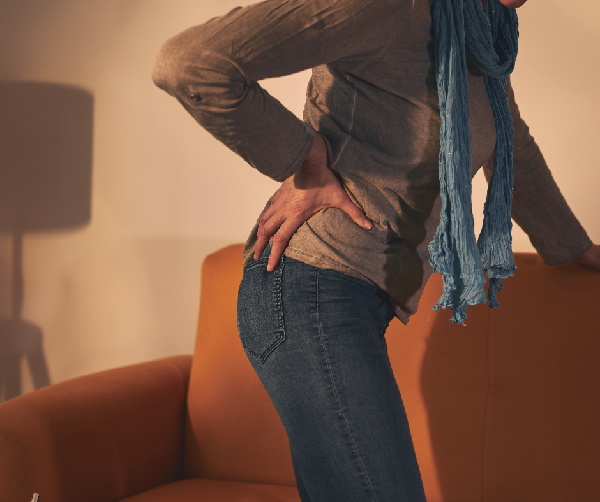Outer Hip Pain – Gluteal Tendinopathy
Gluteal tendinopathy is the most common cause of lateral/outer hip pain. In the past it was often diagnosed as trochanteric bursitis, however we now know that the tendon is more often the cause of the pain.
There are three gluteal muscles in the buttock (G maximus, G medius, G minimus) which originate in the pelvis and attach via their tendon to the outer hip/femur. These muscles help to stabilise the pelvis on our legs as we walk. In people with outer hip pain it is most commonly the gluteus medius muscle that is affected.

TENDINOPATHY CAN DEVELOP FOR DIFFERENT REASONS:
- There may be a history of overload eg. A runner ramping up training before a race or someone walking more than normal while on holidays
- A history of underload eg. Returning to usual activity after being unwell or after a relaxing holiday break
- Gluteal tendinopathy/Outer hip pain is also common in women over 50. We all start to lose muscle mass with ageing; however menopause sees a decline in estrogen too. This results in the tendons becoming stiffer and more susceptible to overload (especially eccentric load).
SYMPTOMS OF GLUTEAL TENDINOPATHY/OUTER HIP PAIN:
Moderate to severe aching in the outer hip which can extend down the outer leg. Pain is often aggravated by weightbearing activity (especially hills and stairs) but can also worsen after inactivity. There may also be a delay between the aggravating activity and the pain flare. Compression also aggravates symptoms, so night-time pain is common.
GLUTEAL TENDINOPATHY/OUTER HIP PAIN IS MANAGED BY:
- Reducing the sensitivity of the tendon as much as possible (avoid/reduce compressive loads along with any aggravating activities)
- Establishing what load the tendon CAN tolerate as a starting point for strengthening the muscle and its tendon. Gradually increasing loads as tolerated following the 24-hour rule (no flare of pain during/immediately after the activity and no worse 24 hours later).
- Re-introducing avoided activities as symptoms settle and strength increases
WHAT TO DO AND WHAT TO AVOID
| DO | AVOID/REDUCE |
| Sleep on your non-affected side with a pillow between your knees (to avoid stretch/compression) OR if lying on affected side get an extra layer of padding | Lying on affected side or sleeping with an angled hip (compressive load) |
| Sit with hips slightly higher than knees, both feet on the floor | Sitting with low chairs or with legs crossed |
| Stand with a level pelvis | Standing/Hip hanging on that side (compressive load) |
| Leave the tendon alone! | Checking the tendon by poking it frequently (compressive load) |
| Use a Trigger ball if your gluteals are feeling very tight to massage the muscle (NOT over the tendon) | Stretching in the early stage as this compresses the tendon against the underlying bone and can aggravate symptoms. Don’t roll the tendon. |
WHAT DO I DO NEXT?
If you live or work near the Sydney City CBD book to see one of our friendly physiotherapists at Macquarie Street Physiotherapy on (02) 9221 1604 or book online.








